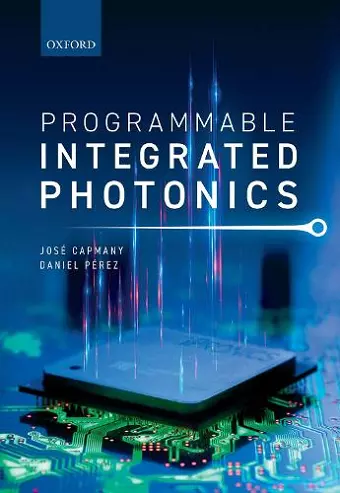Programmable Integrated Photonics
Daniel Perez author José Capmany author
Format:Hardback
Publisher:Oxford University Press
Published:5th Mar '20
Currently unavailable, and unfortunately no date known when it will be back

This book provides the first comprehensive, up-to-date and self-contained introduction to the emergent field of Programmable Integrated Photonics (PIP). It covers both theoretical and practical aspects, ranging from basic technologies and the building of photonic component blocks, to design alternatives and principles of complex programmable photonic circuits, their limiting factors, techniques for characterization and performance monitoring/control, and their salient applications both in the classical as well as in the quantum information fields. The book concentrates and focuses mainly on the distinctive features of programmable photonics, as compared to more traditional ASPIC approaches. After some years during which the Application Specific Photonic Integrated Circuit (ASPIC) paradigm completely dominated the field of integrated optics, there has been an increasing interest in PIP. The rising interest in PIP is justified by the surge in a number of emerging applications that call for true flexibility and reconfigurability, as well as low-cost, compact, and low-power consuming devices. Programmable Integrated Photonics is a new paradigm that aims at designing common integrated optical hardware configurations, which by suitable programming, can implement a variety of functionalities. These in turn can be exploited as basic operations in many application fields. Programmability enables, by means of external control signals, both chip reconfiguration for multifunction operation, as well as chip stabilization against non-ideal operations due to fluctuations in environmental conditions and fabrication errors. Programming also allows for the activation of parts of the chip, which are not essential for the implementation of a given functionality, but can be of help in reducing noise levels through the diversion of undesired reflections.
This book will therefore be a useful addition equally to those wanting to learn its design principles and those looking for an uptodate account of integrated photonics. * Ryan Aguinaldo, IEEE PhotonicsSociety Newsletter Editorial Staff, IEEE PHOTONICS SOCIETY NEWSLETTER *
When two experienced and accomplished researchers collaborate to deliver a book elucidating an exciting emergent field of activity, one hopes for an enjoyable and educative reading experience. This book provides exactly that...This is the go-to book for current and future researchers in this field. * K. Alan Shore, Optics & Photonics News *
This is an excellent book on a field of great promise. [...] The authors, leading researchers in the field, have produced a clear and comprehensive text that covers various aspects of the subject with a lot of details and examples. * Goran Mashanovich, University of Southampton *
ISBN: 9780198844402
Dimensions: 253mm x 174mm x 24mm
Weight: 844g
362 pages